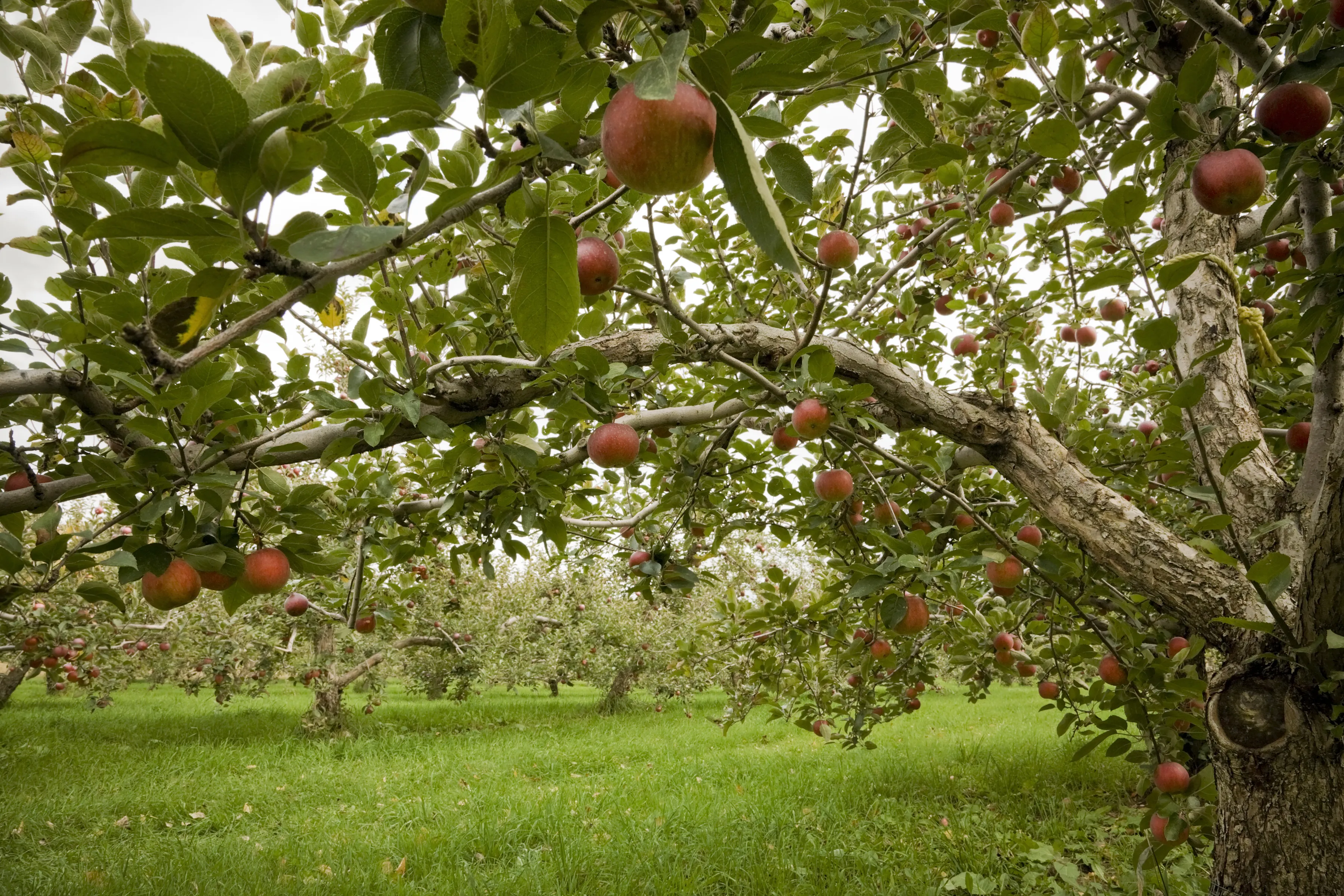Starting an Orchard (Part I)
“The best time to plant a tree was 20 years ago...the second best time is now” - Chinese
proverb
Well, sort of. Perhaps the more responsible answer would be that the second best time to plant a
tree is after you’ve conducted a soil test, planted cover crop, and memorized your region’s heat index.
Amidst the excitement of future pies, jams, and ciders, starting an orchard implores careful
investments and planning. But, the lure of fruit’s high dollar value, the diversification of adding
perennials to your system, and simply the joy of growing crops that satisfy your sweet tooth, are
reason enough to pursue orcharding.
Are you ready?
The first step toward planning an orchard is to ask yourself, “am I ready?” Orin Martin, manager of
the Alan Chadwick garden at UCSC, says you need roughly 1-3 years of lead time before starting an
orchard. This time is to acquire the horticultural skills for fruit tree management, outline your
farm system, and prep the ground. First, consider the goals of this new orchard. Are you going
to grow fruit for a U-pick, a CSA add-on or stand alone fruit share, value added products,
restaurants, or other markets? How will this purpose influence the scale, size, and varieties of
trees you select? “Match your system to your skill base” Orin heads, “the more intensive your system
is, the more precision you’ll need with inputs and timing, therefore requiring a more developed
skill set.” Particularly if the orchard is going to be one facet of a larger, diversified farming
production it’s all the more reason to keep it simple.


Know your climate. Know your soil.
Before you decide on types and varieties of fruit trees, start here. Check out the plant
hardiness zone map and find out how many chill hours your region typically receives each winter, to inform what trees
will likely thrive. Orin suggests that you be “particularly interested in the temperatures around
the time of bloom, as both pollen and fruit have very little frost tolerance.” Furthermore, it’s
important that you assess your soil both quantitatively (via soil tests and soil maps) and
qualitatively. “Dig a hole!” to observe the soil profile looking for any problem areas such as
“impervious layers, clay pockets, or compaction that could create drainage issues.” Given that
80-90% of fruit tree feeder roots are in the top 12-24” of topsoil, digging just two to three feet
down can reveal a lot of helpful information. Pay attention to any red flags that surface in your
soil assessment, as Orin forewarns, “it’s much more expensive to farm poor soil then good soil.”
Site Selection
First take note of the contours and microclimates on your property, as they can either provide “a
significant boost (in growth) or be retarding.” South facing slopes are best, generally warmer, and
hit by less frost than slopes in other directions. Additionally, “because cold air is heavy, it
tends to settle at the bottom of slopes where frost pockets tend to be” making it wise to avoid
bottomland. On the other hand, the tops of slopes tend to be wind prone which can stunt tree growth.
As you analyze your contours and microclimates keep in mind that during the growing season trees
require more than 10 hours of sunlight a day. Access is another crucial and practical factor to take
into calculation when selecting a site; make sure you’ll have access for vehicles, a packing shed,
irrigation water, fencing, roads, etc. In general, your trees will do better if it’s a site you
visit often, as Orin reminds us of the old proverb “the best fertilizer is a farmer’s
footsteps.”
If you liked this article, and want to see more like it, enter your email in the subscribe box
to the top-right of this page and we'll send you new blog articles as we publish them.

Jane works as a Field
Production Specialist at the Center for Agroecology and Sustainable Food Systems, where her days
are filled with tractor work, irrigation coordination, orchard care, and educating apprentices
and interns. Her favorite way to end a long day's work in the sun, is running down the hill to
Mitchell's Cove and jumping in the Pacific.